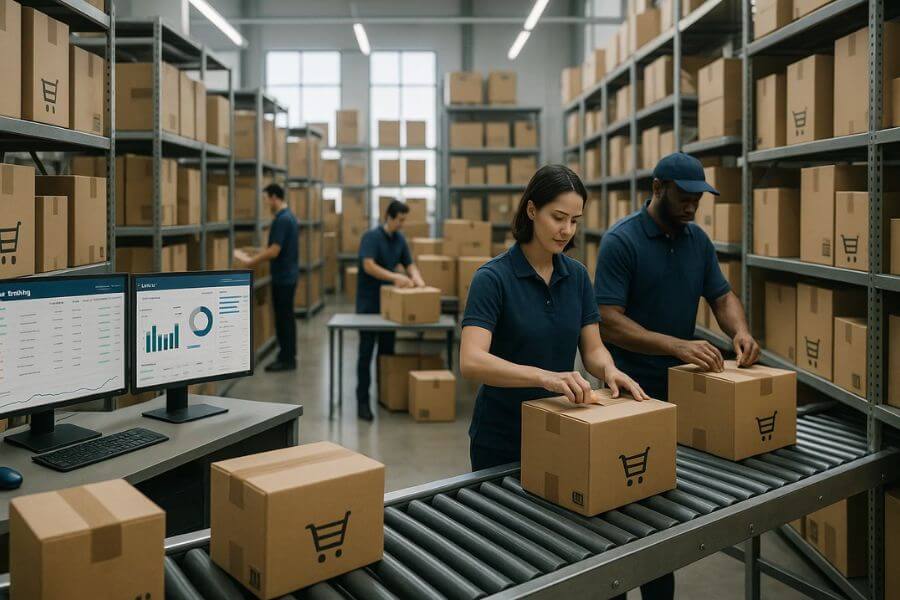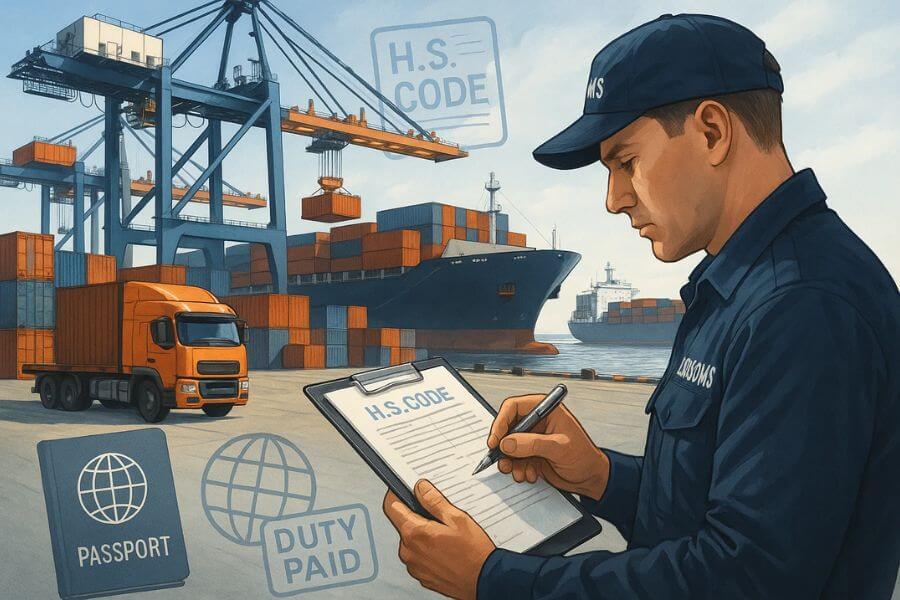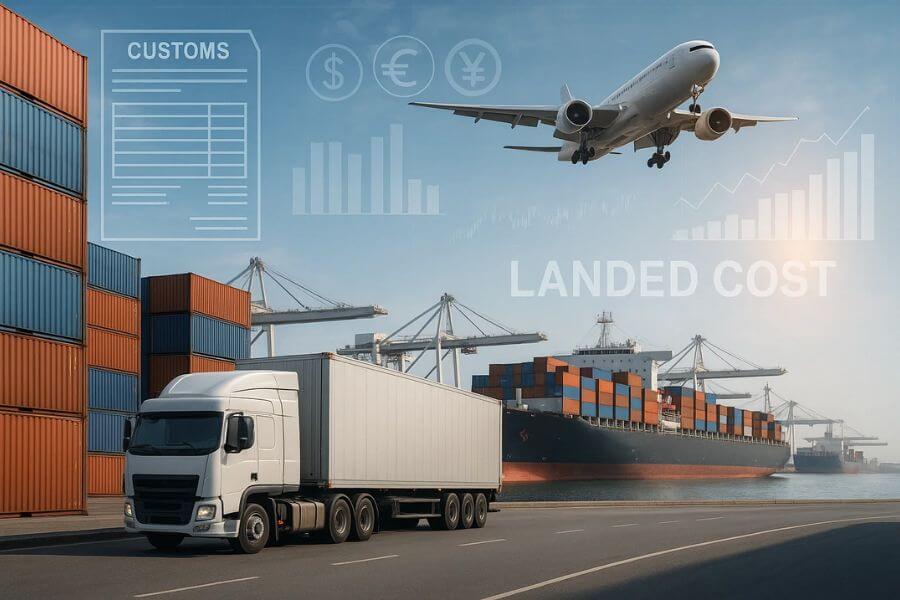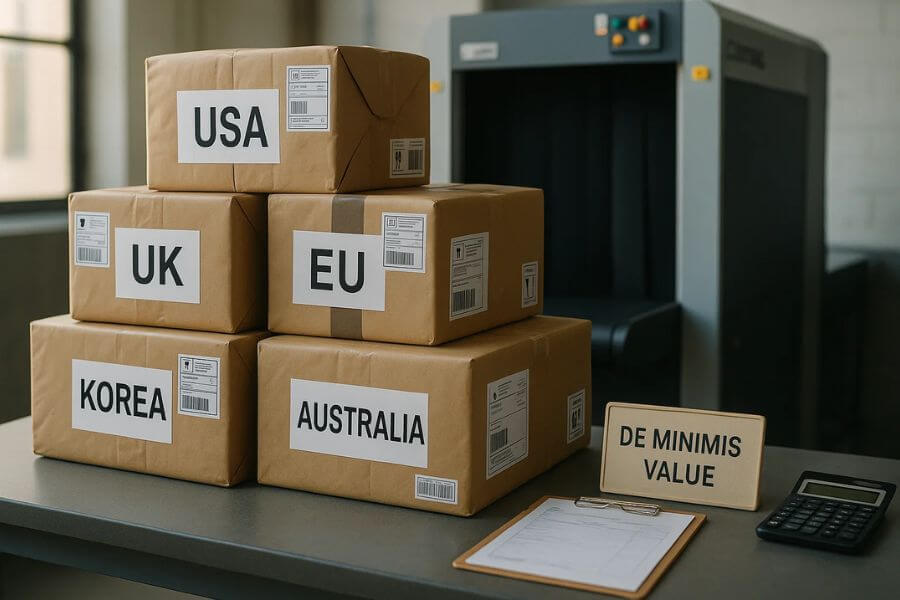Direct-to-consumer (DTC) brands are rewriting the rules of retail. By selling directly to customers rather than going through wholesalers or retailers, brands can build stronger relationships, deliver personalized experiences, and keep tighter control over pricing and messaging.
But there’s a catch: a DTC brand is only as strong as its fulfillment strategy. No matter how appealing the product or how creative the marketing campaign, if a package arrives late, damaged, or incorrectly packed, the entire customer relationship is at risk.
That’s why DTC fulfillment has become one of the most important factors in ecommerce success. This guide will walk you through everything you need to know about DTC fulfillment—from what it is and why it matters, to strategies, technology, examples, and future trends.
What is direct-to-consumer (DTC) fulfillment?
At its core, direct-to-consumer fulfillment is the process of managing inventory, processing customer orders, picking and packing products, and shipping them directly to the end customer. Unlike traditional retail supply chains, where products move through distributors, wholesalers, and retailers before reaching buyers, DTC brands handle fulfillment themselves or through specialized partners.
Key characteristics of DTC fulfillment:
- Direct connection with customers: Orders come straight from buyers to the brand, with no retail middleman.
- Control over logistics and branding: Companies decide how products are packaged, shipped, and delivered.
- Customer data ownership: Brands gain insights into buyer behavior, preferences, and purchase patterns.
- Opportunity for personalization: Each package can be customized, from packaging materials to inserts and notes.
Unlike wholesale fulfillment, where the brand’s role largely ends once goods leave the factory, DTC fulfillment makes logistics part of the brand experience. This means packaging, delivery speed, and communication all play a role in shaping customer loyalty.
Why does DTC fulfillment matter for growing brands?
The ecommerce boom has raised customer expectations dramatically. Thanks to retail giants like Amazon, shoppers expect:
- Fast delivery (2-day or even same-day shipping).
- Low or free shipping costs.
- Full visibility with tracking and proactive updates.
- Seamless returns without hassles.
If a DTC brand falls short on these expectations, customers may not return—even if they love the product. Fulfillment directly affects:
Profitability
Efficient fulfillment reduces wasted labor, shipping errors, and unnecessary returns. Since DTC brands often operate with thinner margins compared to wholesale, even small improvements in logistics can protect profitability.
Customer loyalty
Studies show that over 70% of customers say delivery experience influences whether they’ll shop with a brand again. Late or inaccurate orders can lose lifetime customers, while fast, accurate delivery turns buyers into brand advocates.
Brand differentiation
In a crowded market, DTC brands must find ways to stand out. Custom packaging, eco-friendly shipping options, and unique unboxing experiences can create memorable brand moments.
Growth potential
Without scalable fulfillment, growth can backfire. Brands that can’t keep up with order volume risk damaging their reputation. Solid fulfillment infrastructure supports smooth scaling.
How does the DTC fulfillment process work?
DTC fulfillment involves multiple interconnected steps. A smooth process ensures accuracy, efficiency, and customer satisfaction. Let’s break it down:
1. Inventory receiving
- Products are delivered from manufacturers to the brand’s warehouse or fulfillment center.
- Items are inspected for quality, counted, and logged into the inventory management system.
- Accurate receiving prevents issues like missing items or incorrect counts.
2. Inventory storage
- Items are stored systematically, usually using barcodes or RFID for quick identification.
- Popular items are often stored in easily accessible zones to speed up picking.
- Storage optimization reduces walking time and increases efficiency.
3. Order processing
- Customer orders flow from the website or marketplace into an Order Management System (OMS).
- Orders are automatically routed to the right warehouse or fulfillment center.
- The system ensures stock is available and allocates inventory.
4. Picking
- Staff (or automated robots) locate items in the warehouse.
- Accuracy here is critical—wrong picks lead to costly returns and poor customer satisfaction.
5. Packing
- Items are carefully packaged, often with branded materials.
- Inserts like thank-you notes, coupons, or product guides can be added.
- Packaging must balance branding with durability to avoid damage.
6. Shipping
- Shipping labels are generated, and carriers are selected (UPS, FedEx, USPS, DHL, or regional couriers).
- Smart shipping software may choose the most cost-effective and fastest option automatically.
7. Delivery and tracking
- Customers receive tracking numbers and regular updates.
- Branded tracking pages can create a consistent experience.
8. Returns processing
- Returned items are inspected, restocked, or marked as defective.
- A smooth returns process builds trust and improves retention.
Each step may seem simple, but together they form the customer journey after purchase—a journey that can make or break the relationship.
What are the key challenges in DTC fulfillment?
While direct-to-consumer fulfillment offers exciting opportunities, it also presents unique challenges that can strain resources and impact customer satisfaction if not handled correctly. Understanding these challenges is the first step toward solving them.
Meeting high customer expectations
Consumers have grown accustomed to ultra-fast delivery, transparent tracking, and free returns thanks to industry leaders like Amazon. Small and mid-sized DTC brands often struggle to meet these standards without driving up costs. Customers don’t necessarily care if a brand is a startup—they expect the same reliability as the giants.
Rising shipping costs
Shipping expenses are one of the largest line items for ecommerce brands. Carriers frequently increase rates, add fuel surcharges, and impose extra fees for oversized or rural deliveries. For DTC brands that rely heavily on affordable shipping to remain competitive, these costs can erode profit margins quickly.
Inventory management complexity
Balancing supply and demand is tricky. Overstocking ties up working capital and increases storage fees, while understocking leads to lost sales and frustrated customers. For DTC brands selling across multiple platforms (Shopify, Amazon, eBay, TikTok Shop, etc.), managing stock levels in real time across all channels can be overwhelming without the right systems in place.
Scalability
What works for 50 orders a week doesn’t necessarily work for 5,000. Manual processes break down, staff becomes overwhelmed, and warehouses struggle to keep pace with growing demand. Scaling fulfillment requires not only more staff and space but also better technology and process standardization.
Returns management
Returns are an inevitable part of ecommerce. In certain categories like fashion, returns can exceed 30% of total orders. Managing returns efficiently—inspecting items, restocking or refurbishing, and processing refunds—requires time and resources. A poor returns process frustrates customers and increases churn.
Seasonal and promotional spikes
Black Friday, Cyber Monday, holiday shopping, and flash sales can cause order volumes to surge dramatically. Without flexible operations, brands may face fulfillment delays, stockouts, or warehouse chaos.
👉 Key takeaway: The biggest challenge in DTC fulfillment is finding the balance between customer expectations and operational efficiency while maintaining profitability.
6 strategies to improve DTC fulfillment
To overcome challenges, DTC brands must adopt proactive strategies that optimize efficiency, reduce costs, and elevate the customer experience.
1. Distributed warehousing
Instead of relying on a single fulfillment center, brands can strategically store inventory in multiple warehouses across different regions. This reduces shipping costs, shortens delivery times, and increases resilience against regional disruptions (like weather or carrier delays).
2. Accurate inventory forecasting
Forecasting tools powered by AI and machine learning analyze historical sales, seasonal demand, and marketing campaigns to predict inventory needs. This ensures you maintain just the right amount of stock—enough to meet demand without tying up cash.
3. Smart order routing
Advanced fulfillment systems can automatically determine which warehouse should fulfill each order based on customer location, inventory availability, and carrier rates. This reduces delivery times and costs while improving accuracy.
4. Flexible shipping options
Offering customers choices increases satisfaction:
- Free shipping on orders above a certain threshold.
- Flat-rate shipping for predictable costs.
- Expedited shipping for those who need items fast.
This flexibility allows brands to control costs while catering to different buyer needs.
5. Streamlined returns process
Returns don’t have to be a burden—they can build loyalty if handled well. Strategies include:
- Prepaid return labels.
- Easy-to-navigate online return portals.
- Encouraging exchanges instead of refunds with incentives like free return shipping or discount codes.
6. Automation and robotics
Automation reduces labor dependency and minimizes human error. Examples include robotic picking systems, barcode scanning, automated packing machines, and conveyor-based sorting. These solutions not only improve efficiency but also allow fulfillment centers to scale more easily.
👉 Key takeaway: A strong fulfillment strategy blends technology, process optimization, and customer-centric policies to ensure efficiency and satisfaction.
6 technology that powers DTC fulfillment
Modern fulfillment is driven by technology. Without it, meeting today’s ecommerce demands would be nearly impossible.
1. Order management system (OMS)
An OMS consolidates orders from multiple sales channels into one platform. Whether an order comes from Shopify, Amazon, or TikTok Shop, the OMS ensures all data flows seamlessly into the fulfillment system. This eliminates duplicate entry and prevents overselling.
2. Warehouse management system (WMS)
A WMS organizes everything inside the warehouse. It optimizes picking routes, ensures inventory is stored efficiently, and tracks stock movement in real time. For high-volume DTC brands, a WMS is essential for reducing errors and speeding up operations.
3. Inventory management software
Accurate stock tracking prevents costly mistakes. Advanced inventory systems monitor inventory across multiple warehouses, predict demand, and alert teams when it’s time to reorder. This visibility helps brands avoid both stockouts and overstocking.
4. Shipping software
Shipping platforms integrate with multiple carriers to compare rates, generate labels, and send automated tracking updates to customers. This ensures cost-effective shipping and improves transparency for customers.
5. Data analytics and reporting
Data-driven insights help brands make smarter decisions. Reports on order accuracy, fulfillment costs, and delivery times highlight strengths and weaknesses, guiding continuous improvement.
6. Integrations and APIs
The true power of technology lies in integration. Modern DTC fulfillment relies on API-driven platforms where OMS, WMS, shipping software, and ecommerce platforms all talk to each other in real time.
👉 Key takeaway: Technology is the backbone of scalable DTC fulfillment. Without it, brands risk inefficiency, errors, and dissatisfied customers.
What are the roles of a 3PL in DTC fulfillment?
For many DTC brands, outsourcing fulfillment to a third-party logistics provider (3PL) is the key to growth. A 3PL handles warehousing, picking, packing, shipping, and even returns.
Benefits of using a 3PL
- Scalability: A 3PL can ramp operations up or down depending on order volumes, eliminating the need for brands to constantly hire staff or expand warehouse space.
- Cost savings: By pooling orders from multiple clients, 3PLs secure bulk shipping discounts with carriers that small brands can’t access on their own.
- Technology access: Leading 3PLs provide advanced fulfillment software, real-time inventory visibility, and automated reporting.
- Geographic reach: Nationwide and international fulfillment networks enable faster delivery to customers worldwide.
Choosing the right 3PL
Selecting a 3PL is a strategic decision. Brands should consider:
- Integration with ecommerce platforms.
- Support for custom packaging and branded inserts.
- Performance metrics such as on-time delivery rate and order accuracy.
- Transparent pricing and clear communication.
Risks of poor 3PL partnerships
The wrong partner can create late shipments, inaccurate orders, or hidden costs that damage customer trust. That’s why due diligence is critical before signing a contract.
👉 Key takeaway: A strong 3PL partnership can turn fulfillment from a burden into a competitive advantage.
What are the metrics to measure success in DTC fulfillment?
Success in fulfillment isn’t just about getting packages out the door—it’s about achieving efficiency, accuracy, and customer satisfaction. Tracking the right key performance indicators (KPIs) allows brands to continuously improve.
Order accuracy rate
Percentage of orders shipped correctly, without wrong items or missing products.
- Why it matters: Errors frustrate customers and increase return costs
- Benchmark: 99%+ accuracy
On-time delivery rate
Percentage of orders delivered by the promised date.
- Why it matters: Customers judge reliability by delivery performance
- Benchmark: 95%+
Fulfillment cost per order
Total cost of fulfillment (storage, labor, shipping, packaging) divided by total orders.
- Why it matters: Helps brands monitor profitability.
Inventory turnover
How quickly products are sold and replaced within a given timeframe.
- Why it matters: High turnover indicates strong demand; low turnover may signal overstocking or weak sales.
Return rate
Percentage of orders returned.
- Why it matters: High rates may reveal product quality issues, misleading descriptions, or sizing inconsistencies.
Customer satisfaction (CSAT/NPS)
Surveys and feedback provide direct insights into how customers perceive the fulfillment process.
👉 Key takeaway: Metrics provide a roadmap for improvement. Brands that measure and optimize regularly outperform those that rely on guesswork.
Real-world examples of DTC fulfillment done right
To better understand how direct-to-consumer (DTC) fulfillment can be executed successfully, let’s look at an example from the modern ecommerce landscape. One standout case is Warby Parker, the eyewear company that revolutionized the way people shop for glasses. Their fulfillment process demonstrates how a brand can align operational efficiency with customer expectations to deliver exceptional results.
Customer-centric fulfillment experience
Warby Parker began by addressing a pain point in traditional eyewear shopping: the need to visit a physical store, pay high prices, and wait for weeks to receive prescription glasses. Their DTC model allowed them to cut out the middleman, offering stylish frames at affordable prices. But what truly sets their fulfillment apart is how they structured their process around the customer experience.
- Home try-on program: Customers can order five frames to try at home, free of charge. This requires a robust fulfillment system that can ship trial products quickly, manage returns seamlessly, and sanitize and restock frames efficiently. The program builds trust and eliminates hesitation in online shopping, all while ensuring operations run smoothly in the background.
- Fast shipping and returns: Orders are typically processed and shipped within a few business days, with return labels pre-included to reduce friction for the customer. Warby Parker’s fulfillment team ensures speed without sacrificing accuracy.
Smart inventory management
A major challenge for eyewear is the wide range of frame styles, colors, and prescription lenses. Warby Parker invests heavily in inventory forecasting to ensure popular items are always available while avoiding overstock. Their fulfillment centers are optimized to handle custom lens production, frame assembly, and packaging under one roof, which reduces delays and minimizes errors.
This inventory control allows them to deliver on their brand promise of affordability and speed while still offering personalization—a key aspect of the DTC fulfillment advantage.
Technology integration in fulfillment
Warby Parker integrates advanced technology across its fulfillment operations:
- Automated order routing: Orders are routed to the nearest fulfillment center capable of handling the prescription, reducing shipping costs and delivery times.
- Real-time inventory updates: Customers can see what’s in stock, reducing frustration from out-of-stock messages after checkout.
- Customer communication: Automated updates keep buyers informed at every stage of the fulfillment process—from order confirmation to shipping to delivery.
These systems reduce human error, keep customers informed, and ensure consistent brand reliability.
Scalability and growth through fulfillment
As Warby Parker scaled from a small startup to a household name, their fulfillment process scaled with them. By investing early in well-structured fulfillment centers and software integration, they avoided common pitfalls that growing DTC brands face, such as delayed shipments, backorders, or strained logistics.
Today, Warby Parker not only sells online but also operates physical retail locations across the U.S. The hybrid model relies on centralized fulfillment systems that serve both online and offline customers, creating a unified brand experience.
What other brands can learn
The key takeaway from Warby Parker’s success is that DTC fulfillment is not just about moving products—it’s about shaping the customer journey. By focusing on convenience, transparency, and speed, Warby Parker created a fulfillment model that enhances customer loyalty while supporting long-term growth.
Other DTC brands—whether in apparel, beauty, or consumer electronics—can adopt similar practices:
- Offer flexible trial or return programs supported by seamless reverse logistics.
- Centralize inventory control to balance availability and cost-efficiency.
- Leverage technology to improve speed, accuracy, and customer communication.
This case proves that when fulfillment is strategically designed, it becomes a core differentiator in a highly competitive market.
Frequently asked questions about DTC fulfillment
Q1: How does DTC fulfillment differ from wholesale fulfillment?
DTC fulfillment focuses on shipping individual customer orders directly to end consumers, while wholesale fulfillment ships large bulk orders to retailers or distributors. DTC requires higher flexibility, faster shipping times, and more personalized packaging compared to wholesale, which prioritizes efficiency and volume.
Q2: Can a small ecommerce business handle DTC fulfillment in-house?
Yes, many small brands start with in-house fulfillment by storing inventory at home or in a small warehouse. However, as order volumes grow, managing storage, packaging, and shipping internally can become overwhelming. At that point, outsourcing to a 3PL (third-party logistics provider) helps streamline operations and scale without sacrificing customer experience.
Q3: What role does technology play in DTC fulfillment?
Technology is the backbone of modern DTC fulfillment. Tools like inventory management software, order management systems, and warehouse automation ensure real-time visibility, reduce errors, and improve efficiency. Integrations with ecommerce platforms (Shopify, WooCommerce, Amazon, etc.) allow businesses to sync orders automatically, avoiding manual data entry and delays.
Q4: How important is packaging in DTC fulfillment?
Packaging plays a huge role in brand perception. Unlike wholesale, where products are often shipped in bulk boxes, DTC allows brands to deliver unique unboxing experiences. Branded packaging, eco-friendly materials, and personalized inserts can increase customer satisfaction and encourage repeat purchases.
Q5: What shipping options should DTC brands offer?
Successful DTC brands typically provide multiple shipping options, such as standard delivery, expedited shipping, and free shipping thresholds. Offering flexible delivery speeds caters to different customer preferences while balancing cost. Many brands also use real-time tracking to build trust and transparency.
Summary
In summary, Direct-to-Consumer (DTC) Fulfillment is the end-to-end process of storing, picking, packing, and shipping products directly from a brand to its customers without relying on third-party retailers or distributors.





